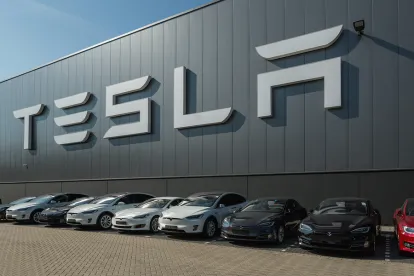The Biden Administration’s day-1 recommitment to the Paris Climate Agreement brings front and center America’s transition to electric vehicles (EVs) that has been slowly underway in the American automotive industry. No longer an idea reserved for R&D departments, liberal enclaves of the US, or the Nordic regions of Europe, EVs are now at the forefront of American car culture. Although most don’t believe EVs will be the single source of salvation for climate change, many are predicting the sustainable transition to EVs will be a key component of reducing the emissions of greenhouse gasses on a large scale. As legacy automotive manufacturers and startups continue to drive the EV space forward at an ever accelerating pace, consumers and suppliers can expect rapid changes in the product and services offered surrounding the EV transition. We can also expect growth pains as the industry adapts to this emerging technology and transition from internal combustion engine (ICE) dominance. These growing pains are going to include infrastructure challenges as we move from gas-pumps to power-plugs and supply chain adjustments as vehicles become more computerized and less mechanized.
In the weeks following 2020 presidential election, General Motors reaffirmed their commitment to EVs, announcing 30 all electric models by 2025 with a goal of phasing out ICE and diesel products by 2035. GM also set a worldwide target for having a carbon neutral footprint by 2040. In line with GM’s climate commitment announcements, GM has recently previewed the renewal of the Hummer nameplate under the GMC brand with the Hummer EV and premiered its’ Cadillac Lyriq model in a primetime Super Bowl ad featuring Will Ferrell and Norway. GM also announced a recent commitment to the EV space by pledging to spend $27B over the next five years solely on EVs and Autonomous Vehicles (AVs) projects. In the background, GM has made investments in EV joint ventures with Honda and Nikola.
Not one for being outdone by their cross town rival, Ford announced a commitment to invest over $29B in EVs and AVs through 2025, with almost $22B of that commitment earmarked for EVs alone. This comes on not only heels of GM’s announcements, but Ford’s renewed commitment towards EVs as they continue to see success with the launch of the Ford Mustang Mach-E crossover SUV. As Ford rides the highs generated by the Mach-E release, Ford has also signaled the continued push towards EVs with a mid-2022 model F-150 EV and EV models for their Lincoln nameplate. Unlike GM, Ford remains committed to various power-train platforms and has not indicated a preference for electrification over ICE or diesel powertrain options.
Not to be overshadowed by their Detroit trailblazers, Tesla announced recent plans to release a new EV product based on their Model 3 platform, with a targeted starting price of $25,000. This lower price-point Tesla has been referenced a number of times by Elon Musk over the past few years, but recent speculation and an announcement from Tesla’s president of Chinese operations point to a lower price-point Tesla on the horizon. The introduction of a more entry-level Tesla opens the proverbial door to an entire market segment of consumers who otherwise are unable or unwilling to pay the premiums afforded by Tesla’s current nameplates such as the Model X and Model Y, or the expected 2021 Roadster.
Although OEMs and startups around the world are moving at breakneck speeds to develop the next “Tesla”, range anxiety continues to be on the minds of consumers. As OEMs push forward with new EV models, cities, developers, and consumers will need to start taking into account the infrastructure needs necessary for keeping these cars on the road. Although those with garages might be able to easily plug-in for the night, consumer who park in shared lots, parking structures, or on their local street will find a plug in car to be a disadvantage when their juice is running low. Setting aside the localized infrastructure needs, the actual power infrastructure in many states and cities will also need to be modernized just to handle the increased power demands of millions of cars now requiring charging, as pointed out by a recent Washington Post article. Although some innovators like AFC Energy and ABB are experimenting with the use of hydrogen fuel cells to power EV charging stations, many sources of charging will still rely on our existing electric grid infrastructures. While we still have time until we see more EVs rolling down the street compared to today, the future is quickly approaching and the need for supporting infrastructure needs to accelerate at an even faster pace than EV adoption.



 />i
/>i
